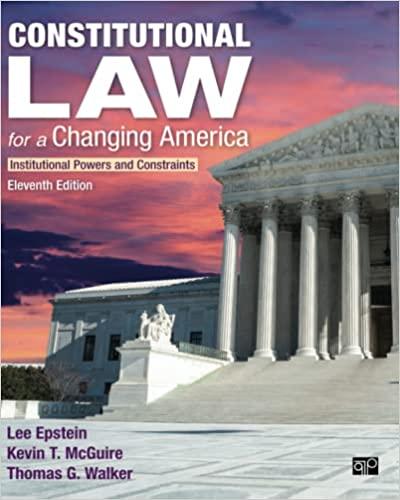Question
Question 10 1 Point The first time a conflict check should be run is when a lawsuit is about to be filed. True False Question
Question 10
1 Point
The first time a conflict check should be run is when a lawsuit is about to be filed.
- True
- False
Question 9
1 Point
If a conflict of interest is between a prospective client and a member of the law firm, the conflict can never be waived.
- True
- False
Question 8
1 Point
Only current clients are owed a duty of loyalty, and thus a conflict check only needs to be run for conflicts among current clients.
- True
- False
Question 7
1 Point
Candor to the tribunal requires an attorney to present all of the controlling case law located in their research to the court.
- True
- False
Question 6
1 Point
A client can always waive a conflict of interest.
- True
- False
Question 5
1 Point
An attorney may never represent a client who has a conflict with a former client.
- True
- False
Question 4
1 Point
A firm can isolate a conflict of interest by setting up office procedures that safeguard the client information from the employee with a conflict.This process is called:
The cone of silence
The safety net
The duty of loyalty
The ethical screen.
Question 3
1 Point
In which of the following situations is the lawyer required to decline representation:
Representing two parties purchasing a plot of land together.
Representing two partners who are suing the managing partners of a large partnership.
Representing a husband and wife in a divorce.
None of the above.
Question 2
1 Point
Candor to the tribunal requires an attorney to:
refrain from making statements of fact or law the attorney knows is false.
correct any previous misstatement of material fact.
disclose controlling legal authority known by the attorney, that is adverse to the client, and that hasn't been disclosed by opposing counsel.
All of the above.
Informed consent regarding conflict means:
The attorney has provided a full listing of every current client to a prospective client.
The client has provided voluntary, written permission, after disclosure of the risks of an attorney taking on potentially conflicting clients.
The attorney has hidden any conflict well enough that the client will never find out about it.
The client verbally waives a conflict after hearing there might be one.
Step by Step Solution
There are 3 Steps involved in it
Step: 1

Get Instant Access to Expert-Tailored Solutions
See step-by-step solutions with expert insights and AI powered tools for academic success
Step: 2

Step: 3

Ace Your Homework with AI
Get the answers you need in no time with our AI-driven, step-by-step assistance
Get Started


